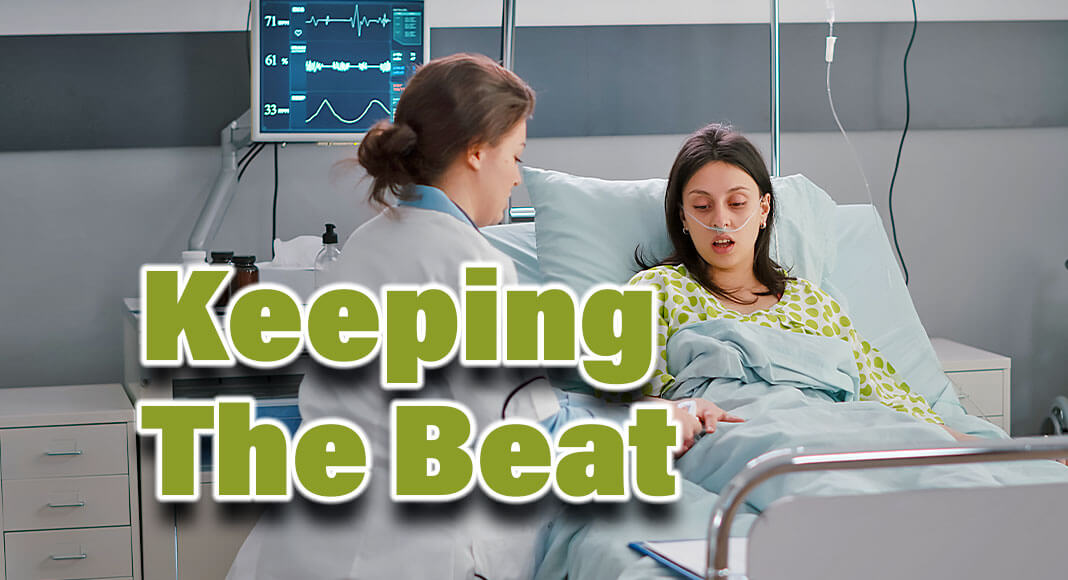
Mega Doctor News
CEDARS SINAI – Heart rhythm disorders like atrial fibrillation and sudden cardiac arrest have made headlines in recent months, prompting many to learn more about how the heart beats.
“It is an exciting time in the field of cardiac electrophysiology, with many treatment options newly available to patients and many more on the horizon,” said Michael Shehata, MD, a cardiac electrophysiologist and director of the Interventional Electrophysiology Laboratory in the Smidt Heart Institute at Cedars-Sinai. “The field is unique in that we treat patients across the age spectrum with myriad conditions, many of which we can cure and treat completely.”
Shehata says the most common heart rhythm disorders he treats are atrial fibrillation—an irregular, often rapid, heart rate that causes poor blood flow and is expected to affect 12.1 million Americans by 2030—and ventricular arrhythmia, an abnormal heart rhythm.
But the heart rhythm disorder garnering the most attention lately, Shehata said, is sudden cardiac arrest—an unexpected loss of heart function that claims at least 300,000 U.S. lives each year. For those affected, 90% will die within 10 minutes of cardiac arrest.
Sumeet Chugh, MD, medical director of the Heart Rhythm Center at Cedars-Sinai and the Pauline and Harold Price Chair in Cardiac Electrophysiology Research, says a sudden cardiac arrest is fatal within 10 minutes unless someone is right there to give CPR chest compressions or deploy a defibrillator.
“This underscores the significance of citizens being better prepared, more educated and willing to do our part to help prevent these cardiac arrests from becoming lethal events,” said Chugh. “It also underscores the vital role of research to move the needle on understanding who is at highest risk for this condition, so that we can make a real impact on preventing sudden cardiac arrest.”
Shehata and Chugh listed some of the recent advances in the electrophysiology field that have given patients new options for treatment:
- Leadless Pacemakers: These miniaturized devices—the size of a small bullet—can be implanted directly into the heart and attached to the heart muscle wall without risk of surgical site infections or other complications. These small pacemakers replace an entire pacemaker, which required a battery and multiple wires that were fed into the chest and could cause infections and other complications. The device works by stimulating the heart muscle during a time interval of contraction, which helps improve overall contractility, or heart squeeze.
- Catheter Ablation Procedures: Using catheters in a minimally invasive way, clinicians can reach the heart from veins in the groin and map out the areas of the heart responsible for heart rhythm disorders, then use either a radiofrequency energy or a freezing balloon to ablate, or remove, harmful tissue. In an editorial published in the New England Journal of Medicine, Cedars-Sinai authors consider expanding the use of first-line ablation for atrial fibrillation to a broader subset of patients.
- Stroke-Preventing Devices: The leading cause of death for patients with atrial fibrillation may not be the heart rhythm disorder itself, but stroke. Roughly 20%-25% of all strokes in the United States are related directly to clot formation during or after these rhythm disorders. For patients with atrial fibrillation who can’t tolerate taking blood-thinning medications for life, clinicians now have novel devices that can occlude—or close—the left atrial appendage and prevent clot formation.
- A Risk Prediction Score for Sudden Cardiac Arrest: Current methods of identifying patients at high risk who qualify for a lifesaving device (implantable cardioverter-defibrillator) are showing diminishing returns. Clinician-scientists at Cedars-Sinai have developed an algorithm that, for the first time, distinguishes between treatable sudden cardiac arrest and untreatable forms of the condition. The findings, recently published in the peer-reviewed Journal of the American College of Cardiology: Clinical Electrophysiology, have the potential to enhance prevention of sudden cardiac arrest—unexpected loss of heart function—based on key risk factors identified in this study.
Read more from the Cedars-Sinai Blog:
Treating Atrial Fibrillation: Risks and Complications
Information Source: CEDARS SINAI











